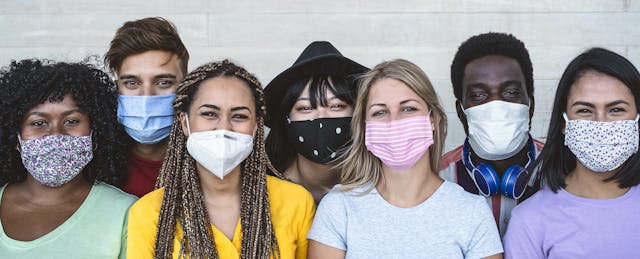As students return to college campuses this month, several higher ed leaders have already criticized them for violating pandemic health policies with “selfish and reckless behavior.”
A new report from the American College Health Association takes a different view of the situation. It makes the case that many college students are “vulnerable” to health and safety threats right now, and it calls on student affairs and college health officials to protect them.
“We know from history that our most vulnerable citizens—marginalized, low income, underserved, and people of color—are the same people who suffer the most during a global health crisis. That holds true on college campuses as well,” said Devin Jopp, chief executive officer of the American College Health Association, in a statement. “It's incumbent on the higher education community to protect and support those of us who need it most and remove the barriers they face in completing their education.”
The association’s new guidelines, titled “Supporting Vulnerable Campus Populations During the COVID-19 Pandemic,” are intended to be a “roadmap” for helping colleges achieve “educational and health equity,” he added.
Not only are racial minorities and low-income people disproportionately affected by disease, the guidelines say, but often they are also blamed for it, too. So far, research shows that people of color have experienced higher infection and death rates from COVID-19. And both domestic college students and those studying internationally in the U.S. have experienced harassment and discrimination that blames Asian countries for the pandemic.
Recognizing these conditions, the report offers recommendations for how colleges can help protect students of color, low-income students and international students from virus infection, strained mental health and the ill effects of racism and xenophobia. It also provides information about serving other vulnerable populations on campus during the pandemic, including students with disabilities, older students and LGBTQ+ students.
Although some college students have been violating health rules by gathering in large groups without masks or physical distance, it’s unreasonable for administrators to invite them back to campus and not expect them to be “social animals” who seek new experiences, Jean Chin, one of the report authors and a member of the American College Health Association COVID-19 task force, told EdSurge in an interview.
“Finger-wagging is never a good approach to public health. Saying ‘you fail’ is never an approach to good public health,” says Chin, associate professor of medicine at Augusta University. “Providing all of the really good and positive reasons to adhere to something is a good approach to public health.”
It’s not enough for higher ed leaders to try to look out for vulnerable student communities, the report says, arguing that public health policies are most effective at colleges when students from vulnerable groups are included in the process of making decisions and communicating best practices.
“Finding the message that these populations, and the rest of campus too, can relate to is critical,” Chin says.
Here are select highlights from the guidelines:
Considerations to Support All Vulnerable Students
- Use culturally relevant images and language in health messages.
- Train health-care providers to provide culturally competent care and look out for patients who may have co-morbidities relevant to COVID-19.
- Make campus environments welcoming for all students by removing racist imagery and by training staff about bias and discrimination.
African American and Black Students
- Students may hesitate to wear masks out of concern over provoking negative reactions from observers and law enforcement officers. Colleges may provide students with branded face coverings to help identify them and make sure local communities and police are informed.
- When encouraging students to get vaccinated, consider the concerns and bad experiences African Americans have historically had with vaccinations.
- Many students may lack sufficient health insurance and rely on the services of student health and counseling centers, even when they are not on campus, so offering telehealth services can help to supplement campus-based care.
Asian and Asian American Students
- Avoid using imagery of only Asian people in communications about COVID-19.
- Explicitly denounce xenophobic language and behavior.
- Because Asian and Asian American students may fear the stigma associated with a COVID-19 diagnosis, they may avoid testing and treatment, so health care providers should proactively offer to assess needs and provide support.
Students with Disabilities
- Provide teaching and learning technology that meets Americans with Disabilities Act requirements.
- Develop guidelines for cleaning campus transportation vehicles and setting them up to allow for physical distancing.
- Allow students who can’t wear face coverings and those with high health risks to take classes remotely.
- Allow students to access three-month supplies of prescription medications when possible.
International Students
- Develop asynchronous classes to allow for timezone flexibility.
- Provide health information in the top 10 languages most used by students.
- Reduce stigma associated with seeking mental health care by sharing resources on the college website and through student groups.


